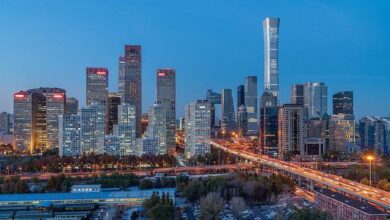
It’s difficult to generalize when discussing European workplace safety standards, as the 28 nations of the EU differ vastly in myriad ways, including underlying governmental policies. Of course, the UK’s forthcoming exit will whittle EU membership down to 27. And while Brexit is predicted to adversely affect the trade economy, it will have little to no effect on overarching workplace safety standards for the remaining member countries.
As it stands, the European Agency for Safety and Health at Work (EU-OSHA) oversees workplace safety across the EU. Yet “legislative requirements in the field of safety and health at work can vary across EU member states,” according to EU-OSHA. Numerous overarching policies exist, however, including a ban on the marketing and use of products that contain asbestos.
Across the Atlantic, the United States operates its own labor safety agency, the Occupational Safety and Health Administration (OSHA), founded in 1971. Nonetheless, it could be argued that some aspects of workplace safety in America fall far short of the standards set by EU-OSHA. This U.S./Europe safety disparity is especially noticeable in terms of environmental policies that relate to the workplace.
The EU has higher standards when it comes to air quality and the regulation of hazardous chemicals. Further, businesses in the EU are typically more ethically sound than their American counterparts, and management more frequently consider the environmental effects of workplace policies, methods, and materials. Further, workers across the EU are afforded various legal protections in the event of a workplace accident or injury.
Sustainability and Ethics in the Workplace
The sustainable cities that are beginning to dominate the EU’s urban landscape are major players in the realm of workplace safety. That’s because improving sustainability, especially where infrastructure is concerned is a complicated job that cannot be implemented without a significant number of workers.
For example, Manchester’s One Angel Square is considered one of the most sustainable in Europe. The massive office building produces zero carbon emissions and received a world-record Building Research Establishment Environmental Assessment Method (BREEAM) score of 95.1% two months before its official completion in February 2013.
During the construction of One Angel Square, about 4,000 jobs were created, proving that building sustainability takes significant manpower. And despite the building’s imposing size and intricate design, no reports of worker injury or fatality from its construction phase seem to exist. It appears that the workplace safety standards of One Angel Square are aligned with its commitment to environmental protection.
Across the EU, we may see One Angel Square’s sustainability model increasingly replicated in the future. That’s because ethical business models are not only socially responsible — they’re profitable as well. According to Washington State University, employees at socially conscious companies are more likely to trust their supervisors and are more engaged in the workplace. In general, a happy, trusting workforce is more productive and less prone to exhaustion. And worker exhaustion, also known as burnout, can lead to workplace accidents and unsafe conditions.
Mitigating Harmful Working Conditions
Back in 2017, France took drastic steps to curb worker burnout by implementing a law giving workers “the right to disconnect” during their downtime. At the time, an estimated 12% of the French workforce was at risk of burnout, which comes with numerous social costs as well as additional healthcare costs related to stress. Unfortunately, the law did little to reduce burnout rates in high-stress jobs, including the medical sector.
One might assume that workers in the healthcare industry are more in danger of communicable diseases or similar hazards than stress and burnout, but data indicates otherwise. In fact, overwork and administrative pressure are key factors towards the high burnout and depression rates seen among French caretakers.
The dangers of burnout notwithstanding, potentially hazardous substances and poor air quality may also put workers at risk. The good news for workers in Europe, whether native or ex-pats, is that the EU has strict policies in place regarding volatile organic compounds (VOCs) and chemicals. VOCs are indoor air pollutants that can trigger asthma and allergies. Employers can reduce the threat of VOCs by ensuring that the building is well-ventilated and installing air purifiers. But more extreme measures and policies must be implemented in case of exposure to hazardous chemicals or materials such as asbestos, once a common insulation material.
Legal Challenges Regarding Asbestos
Asbestos exposure is a prime example of the ways in which regulations and standards on toxic substances in the U.S. and EU differ considerably. EU labor laws prohibit activities that may expose workers to asbestos fibers in any capacity, as well as the manufacture of asbestos products. However, the policy is far from perfect, according to the European Trade Unit Institute (ETUI).
For instance, self-employed workers aren’t protected by the ban, and workers who are exposed are not listed by employers or otherwise monitored. From a public health standpoint, asbestos regulations are absolutely essential for workers in construction and similar industries. Breathing in even a small amount of asbestos fibers puts workers at high risk for developing lung cancer.
Despite the inherent dangers of asbestos exposure, the material remains in widespread use in the U.S. Since 1989, the Environmental Protection Agency (EPA) has banned certain products containing asbestos, but the list is far from comprehensive. And the EPA’s partial ban does nothing to help protect workers from asbestos exposure.
When one considers that the U.S. is one of the few developed nations that has pulled out of the Paris Agreement on climate change, it’s not surprising that its workers remain at risk of asbestos exposure. Perhaps it’s time for the U.S. to take a page from the EU in regards to worker rights and protections, from asbestos to burnout and beyond.




